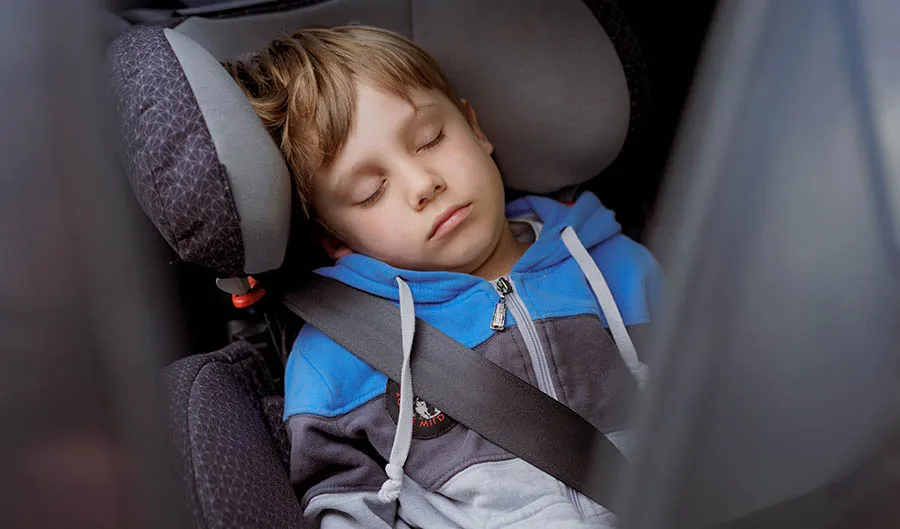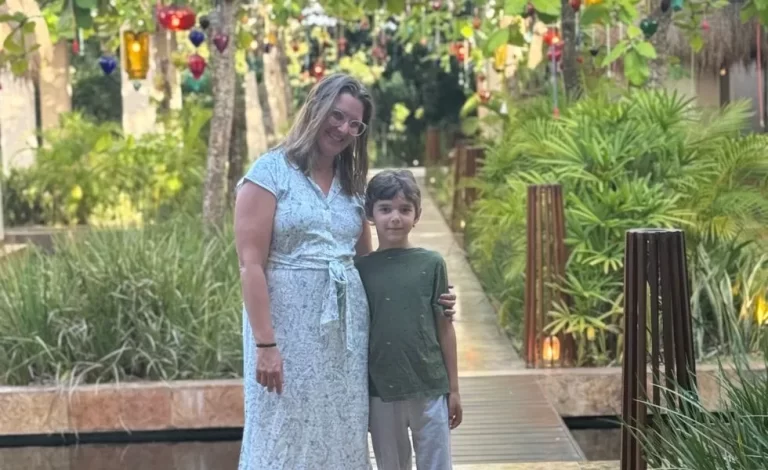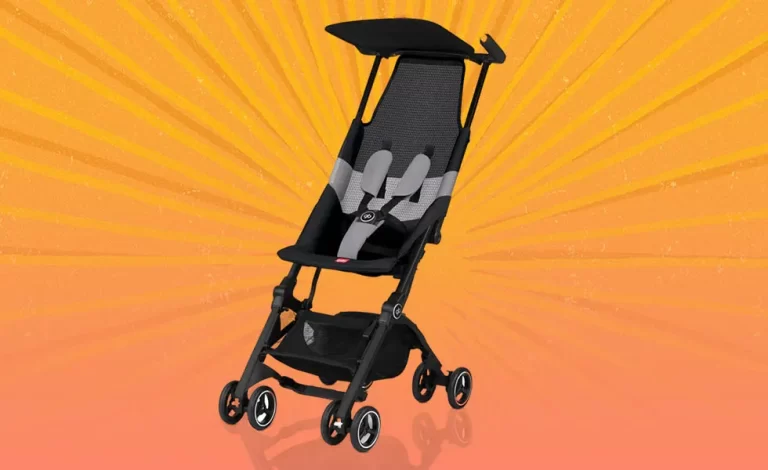Yes. Yes you can.
Let’s be honest—traveling with little ones can feel overwhelming. Between figuring out what to pack, navigating planes and trains, and keeping children entertained during the trip, it’s a lot. But with a bit of preparation, traveling doesn’t have to be a nightmare. And when it comes to sleep—something that feels like it can make or break a trip—I’ve got you covered.
As a Pediatric Sleep Consultant, in-home daycare provider, and mom of two, I’ve spent 25 years helping families navigate sleep, both at home and while they’re traveling the world. Whether you’re headed on a road trip, a long flight, or just trying to survive an overnight stay at Grandma’s, this blog will focus on protecting your child’s sleep before, during, and after your trip. Let’s dive in!
Preparing for the Trip: Setting Your Child Up for Success
A good trip starts before you even leave the house. You can avoid major sleep disruptions by ensuring your little one has strong sleep habits in place. Think of it like building a strong foundation—solid sleep routines now will help you transition smoothly when you’re in a new environment (and when you return home).
Solidify Your Routine
Start by locking in your child’s sleep routine a few weeks before the trip. Consistency is your best friend here, as a solid routine helps your child feel secure and know what to expect each day. Focus on key elements like a predictable bedtime routine—bath, story, song, and dim lighting—to signal that it’s time to wind down. You can also try keeping nap times, meals, and quiet time consistent. This stability will help your child feel more at ease and make it easier to adapt to new environments while traveling.
Pack Smart: Don’t Forget Sleep Essentials
Packing the right sleep essentials can make all the difference when traveling with little ones. When it comes to sleeping away from home, the goal is to create a familiar, comforting space even in an unfamiliar environment. Bring a travel crib or pack-and-play along with key comfort items like their crib sheet or favorite blanket—the familiar scent and feel can ease the transition. A portable white noise machine is a must-have to block out unfamiliar sounds, and travel blackout shades help keep the room dark and cozy, making it easier for your child to settle in, no matter where you are.
SlumberPod to the Rescue
If you’re looking for an all-in-one solution to create a dark, cozy sleep environment, especially in shared or bright spaces, I highly recommend the SlumberPod. It’s perfect for giving your little one their own private nook, whether you’re in a hotel, a rental home, or even staying with family. No more hiding in the hotel bathroom while your little one falls asleep! Pro tip: Practice setting up the pack-and-play and SlumberPod before you leave. Set them up in your child’s room to let them play and nap in the space beforehand. This way, they’ll be more comfortable using it on the go (Psst…use my affiliate code “sleepconnections” to save on your purchase!).
Plan Travel Around Naps: Keeping Your Little One Rested
One of the best ways to make travel with little ones more manageable is to plan your journey around their nap schedule. Whether you’re taking a road trip or flying, being strategic about timing can help reduce meltdowns and keep everyone a little more relaxed.
Car Rides
If you’re driving, try to schedule your departure at your child’s usual naptime. Children will often fall asleep once the car moves, giving you a window of peaceful travel. For longer trips, plan to stop during your little one’s wake window to allow for play, snacks, or bathroom breaks, and then get back on the road for the next nap. Keeping naps as close to their normal time as possible will help your child feel more settled, even if the sleep environment is different.
Flights
Aim to book flights around nap or bedtime if your schedule allows. Recreate some elements of their bedtime routine in the air—use a white noise app, offer a favorite lovey, and dim the lights if possible. Even if it’s not a perfect nap, this helps set the stage for sleep when you arrive at your destination.
The Key to Sleeping Once You Arrive: Consistency + Flexibility
When you’ve reached your destination, the goal is to make your little one feel as comfortable as possible. While the environment will be different, and some adjustments will need to be made, a combination of consistency and flexibility will help your child settle into the new space.
Recreate Their Sleep Space
Setting up your child’s sleep area with familiar items from home can help ease the transition in this new environment. Using their crib sheets or favorite blankets will provide familiar smells and textures. If they’re used to sleeping with a white noise machine or in a dimly lit room, recreate those elements to help them relax while in an unfamiliar space. Nightlights or portable blackout curtains can help ensure the room feels cozy and sleep-friendly.
Schedule Down Time
While it’s tempting to pack your itinerary full of activities, don’t forget to schedule some downtime. Kids, especially infants and toddlers, need breaks to rest and recharge.
Stick to the Schedule, But Be Flexible
Maintaining a consistent schedule during your trip can provide a sense of security for your child. Stick to your usual schedule as closely as possible. However, flexibility is equally important. You may find that naps are shorter or bedtime shifts later due to activities. That’s okay! Just try to get back to your normal schedule when possible. If there are disruptions, focus on helping your child wind down during the day, perhaps with some quiet play, extra snuggling, or even a walk to help them decompress..
Follow the 80/20 Rule
If you’re like me, you’re probably overwhelmed by the conflicting advice. ‘Be consistent!’ and ‘Stay flexible!’ Which is it? The answer lies in the 80/20 rule: Aim for 80% consistency with your child’s routine, allowing for 20% flexibility. A little wiggle room won’t derail your sleep progress, and this balance can make the trip more enjoyable for everyone. It’s okay if your child stays up a little later for special events; just work on returning to your regular routine afterward.
Managing Time Zone Changes
Handling time zone differences can be tricky, but with thoughtful planning, you can help your little one adjust more smoothly.
1-2 Hour Time Differences
For shorter time changes (1-2 hours), it’s usually best to stick to your child’s home schedule. For example, if your baby usually naps at 12 PM, try to keep that same nap time in the new location, even if it feels a little early or late based on the local time. This helps prevent overtiredness and keeps their internal clock close to what it’s used to.
3 or More Hour Time Differences
For bigger time changes, it’s a good idea to slowly adjust your child’s schedule. In the days leading up to your trip, shift their bedtime and nap times by 15-30 minutes each day to gradually transition them to the new time zone. Once you arrive, try to get them on the local schedule as soon as possible. Exposure to natural daylight during the day can help reset their internal clock.
Jet Lag Tips for Kids and Parents
Jet lag is never a fun feeling, and if it can affect adults, it can affect kids, too. Here are some tips to minimize its impact:
Stay Hydrated
Drink plenty of water before, during, and after your flight to keep everyone hydrated. Dehydration can make jet lag feel worse.
Use Sunlight to Your Advantage
Once you arrive, get outside and expose your little one to natural light during the day. Sunlight is key to resetting your internal clock.
Take Short Naps (If Needed)
If your child (or you) is struggling with jet lag, a short nap can help. Just keep naps brief (30-45 minutes is best) so they don’t interfere with nighttime sleep.
Be Patient
It can take a few days for everyone to adjust fully to the new time zone, so be flexible with your routine and give everyone time to settle in.
Settling Back in at Home: Easing the Transition
Coming home can be just as tricky as getting to your destination. Your child may be overtired, off their routine, or may have picked up some bad habits (Thanks, Grandma). But don’t panic—this is normal! Here are a few tips to help you get back on track.
Gradually Shift Back to Regular Sleep Times
If your little one’s schedule was thrown off, ease them back into their regular routine over a few days. Maybe push sleep times in 15-30 minute increments. Don’t expect things to return to normal immediately; give it time.
Be Patient
Travel is exciting, but it can also be exhausting for little ones (and adults!). Be patient with them and yourself as you adjust back to normal. Consistency will pay off in the long run.
Want More Travel Tips?
If you’re looking for even more detailed guidance—like handling sleep when crossing time zones or managing travel meltdowns—check out my Ultimate Travel & Sleep Guide. It’s packed with specific tips to help you on your traveling adventure! Click HERE, and for only $12.00 you’ll have everything you need to travel like a pro!
Traveling with little ones doesn’t have to be stressful, and with some thoughtful preparation, you can help your child maintain their sleep routine while making special family memories.
Safe travels, and remember—I’m always here to help if you need extra support before or after your trip!
Written by Leigh-ann Vlaar
Certified Pediatric Sleep Consultant and owner of Sleep Connections




